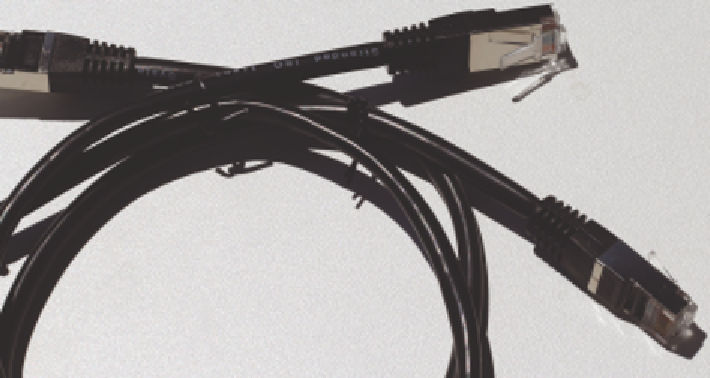Hardware Reference
In-Depth Information
Several other network technologies have been used in computing, such as token
ring and ARCNET, but Ethernet remains the dominant system in place today.
Ethernet Cables
Ethernet describes both twisted cable and i ber optic cables, but for most home
and ofi ce use, you will i nd only a twisted pair cable, a cable where the two ele-
ments are twisted around each other to cancel out electromagnetic interference.
The cable comes in several categories, but the physical connectors are the same
as shown in Figure 9-1.
Figure 9-1:
Ethernet cables
The advantage to Ethernet cables is their l exibility. Both ends have the same
connector, and either end can connect to any device. Cables come in many different
lengths—from the shortest (used to connect switches together) to the longest (used
sometimes to connect two buildings together to form a network).
Category 6 cables are used on gigabit networks or networks that can send
one thousand million bits of data per second. They have strong electromagnetic
shielding, making them heavier and harder to bend than the previous Category
5 and 5e cables, and they are more expensive. Category 5e can be used on gigabit
networks, but they have a lower signaling speed and are more susceptible to
electromagnetic interference. Arduino Ethernet interfaces normally operate at
10- or 100-megabit speeds, so Category 5e cables are sufi cient.
Switches and Hubs
A standard Ethernet cable can be used to connect two computers together,
but to connect more than two computers, you must use a special device.































Search WWH ::

Custom Search